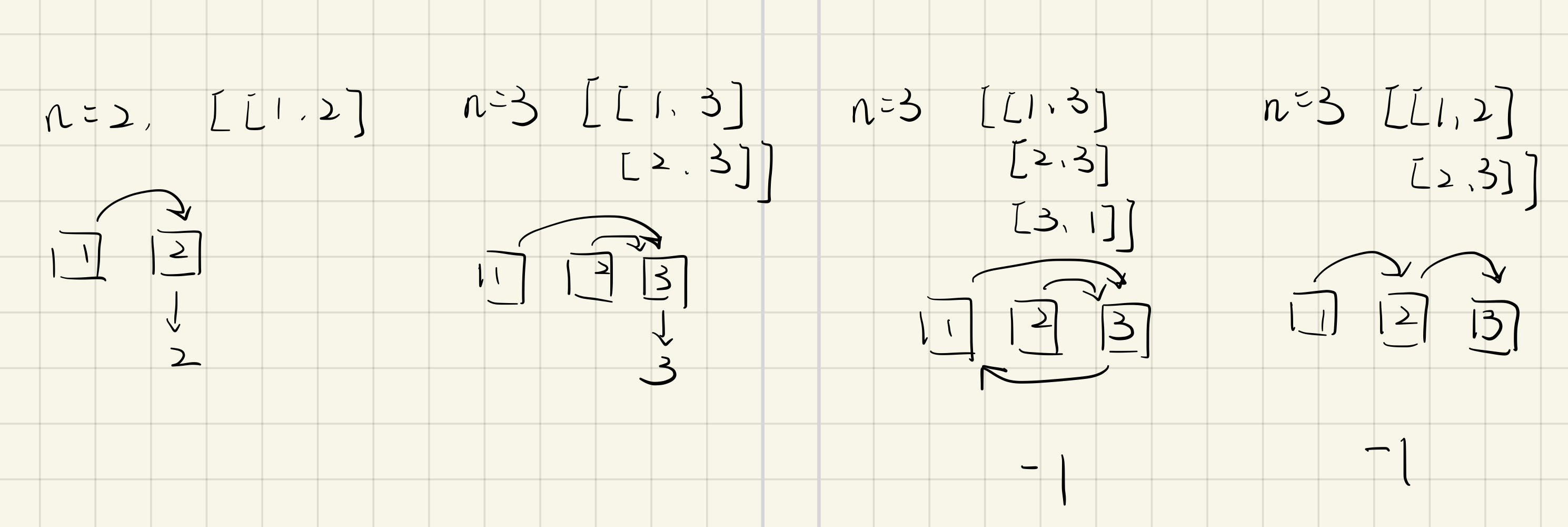based on the requirement in the question,\n the judge should have outdegree of 0 and indegree of n-1.
class Solution:
def findJudge(self, n: int, trust: List[List[int]]) -> int:
# topologic sort
graph = collections.defaultdict(list)
outdegree = collections.defaultdict(int)
for a, b in trust:
graph[b].append(a)
outdegree[a] += 1
for i in range(1, n+1):
if outdegree[i] == 0 and len(graph[i]) == n-1:
return i
return -1
997. 找到小镇的法官
入选理由
暂无
题目地址
https://leetcode-cn.com/problems/find-the-town-judge/
前置知识
题目描述
如果小镇的法官真的存在,那么:
小镇的法官不相信任何人。 每个人(除了小镇法官外)都信任小镇的法官。 只有一个人同时满足条件 1 和条件 2 。
给定数组 trust,该数组由信任对 trust[i] = [a, b] 组成,表示编号为 a 的人信任编号为 b 的人。
如果小镇存在秘密法官并且可以确定他的身份,请返回该法官的编号。否则,返回 -1。
示例 1:
输入:n = 2, trust = [[1,2]] 输出:2
示例 2:
输入:n = 3, trust = [[1,3],[2,3]] 输出:3
示例 3:
输入:n = 3, trust = [[1,3],[2,3],[3,1]] 输出:-1
示例 4:
输入:n = 3, trust = [[1,2],[2,3]] 输出:-1
示例 5:
输入:n = 4, trust = [[1,3],[1,4],[2,3],[2,4],[4,3]] 输出:3
提示:
1 <= n <= 1000 0 <= trust.length <= 104 trust[i].length == 2 trust[i] 互不相同 trust[i][0] != trust[i][1] 1 <= trust[i][0], trust[i][1] <= n